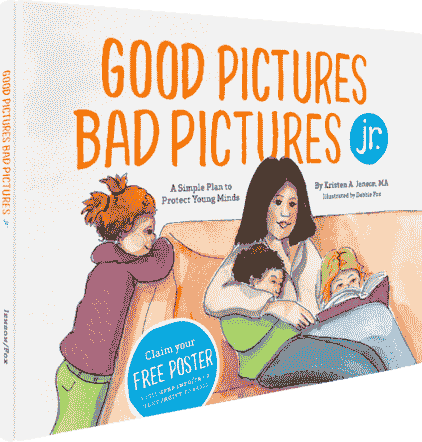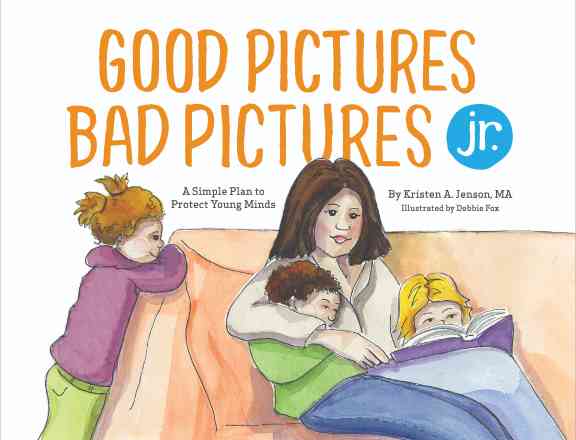

Child Sexual Abuse–5 Things Parents Must Do to Avoid Causing More Trauma
I’m a sexual assault nurse examiner (SANE) and I think about child sexual abuse a lot. I have seen and reviewed hundreds and hundreds of cases of child sexual abuse. At this point, I’ve seen almost every scenario on the planet. Every form of sexual abuse is traumatic. Contrary to popular belief, some forms of sexual abuse are not “worse” than others. All sexual violation is harmful and very complicated for families to wade through.
One thing I’ve learned is that most parents and caregivers are certain sexual abuse would never happen to their kids. But when it does, most adults don’t know what to do and sometimes make things worse. We can fix that–let me share my hard won wisdom so you can respond to sexual abuse in healthy ways that lead to healing.

What to do when a child discloses sexual abuse
While no healthy adult would wish for a child to be harmed, it’s important to be prepared in the event that a child discloses sexual abuse. Child sexual abuse is rampant in the United States, with research showing that 1 in 10 kids will be a victim of sexual abuse by their 18th birthday. (1)
Here are some things you can do to avoid causing more trauma when a child discloses sexual abuse:
1. Stay calm
I know; it’s traumatic, it’s alarming, it’s infuriating, and scary. But, your reaction sets the tone for everything that is to follow. If you can stay calm (again, I know it’s almost impossible when fight, flight, or freeze sets in), and show a child that you are safe and strong enough to handle their disclosure, they will feel supported and know you are an adult they can lean on for help. Many children disclose abuse only to be met with disbelief, dismissal, anger, or “you’re lying.” Sadly, the result is that they never speak of their abuse again.
2. Avoid asking leading questions
For example, “Was Uncle Johnny the one who did this?” By phrasing it that way, it introduces Uncle Johnny as the perpetrator when that may not be the case. Use open-ended questions to clarify, like, “Can you tell me more about what happened?”.
If a child discloses, affirm them with statements like, “I am so sorry that happened”, “You are really brave for telling me”, or “Thank you for telling me such a hard thing.” Avoid any type of detailed questioning if possible.
The reason being that most children will have a forensic interview, where a professional interviewer will ask questions (in a child-friendly way) about the assault to help investigators. Asking leading questions can potentially taint or influence the forensic interview.
3. Assume they are telling the truth
Remember that kids almost never lie about sexual abuse. In fact, research shows that only a tiny percentage of kids lie about sexual abuse, and even then, it’s often influenced by a parent. (2) We should always assume a child is telling the truth about sexual abuse because most often they are. Additionally, younger children may not have words or context to explain what is happening to them, so while some disclosures may sound “silly,” paying attention to their disclosure is essential.
Related: 5 Body Safety Rules Every 5-Year-Old Should Know
4. Know that most children do not have genital injuries after a sexual assault
Despite what many believe, you typically cannot “see” if a child has been sexually assaulted or penetrated. In fact, around 95% of kids who are examined after assaults have no signs of trauma. Because genital tissue is stretchy and heals so quickly, most assaults do not create injuries, or they heal completely before an exam. (3) There is no way to tell if a female is a “virgin” or if there has been any type of penetration. These are harmful myths that are an inaccurate representation of female anatomy. Bottom line, if a child doesn’t have an injury, it does not mean they were not sexually assaulted.
Related: 4 Misunderstood Signs of Child Abuse: A Sexual Assault Nurse Speaks Up
5. Remember that 90% of children are sexually abused by someone who has a relationship with them, not by a stranger
Many perpetrators not only groom the victim, but also the victim’s family, so that it seems unfathomable that they could be the abuser. Abusers can be charming, appear to be trustworthy, and take their time getting to know a family. This doesn’t mean a child is lying when they disclose. (4) It’s also important to remember that our bodies hold trauma. So, even if a child is too young to remember what happened to them, it doesn’t mean there will not be trauma associated with the abuse they experienced.
Related: Sexual Assault Nurse Links Porn to Child-on-Child Abuse: Interview with National Expert Heidi Olson
[[CTA]]
What happens after sexual abuse is disclosed?
1. Most importantly, the child needs to be protected from the perpetrator right away.
You can take your child to an Emergency Department or Child Advocacy Center (CAC) to get immediate assistance.
2. A police report needs to be made, as well as a call to child protective services.
Typically social workers at hospitals and CACs will do this for the family.
Depending on the disclosure, it’s likely that the child will be referred to an Emergency Department for a forensic exam (where a nurse collects DNA off of the child’s body as evidence and ensures that there are not any medical issues) and will have a forensic interview. Sometimes these happen at the same location, and there are instances where they will occur at two separate entities.
3. The perpetrator is addressed.
The next steps are dependent on who the perpetrator is.
If the perpetrator is a minor, they will likely be referred to therapy through the juvenile justice system.
If the perpetrator is a parent or caregiver, child protective services will come up with a safety plan to ensure that the child is safe during the investigation, and law enforcement will look into the allegations.
If the perpetrator is an adult (but not a caregiver), law enforcement will investigate the allegations.
Unfortunately, the processes and systems in place are not timely or seamless. For parents, it often means calling detectives and caseworkers to get answers.
Another reality is that sometimes without repeated disclosures or any genital injuries or DNA evidence, cases are deemed “unsubstantiated.” This means that there isn’t enough evidence to move forward with charges. This doesn’t mean the sexual abuse didn’t occur. This can be an incredibly frustrating reality for families who get the news that their case isn’t moving forward.
For cases that are substantiated, it likely means the adult abuser will be arrested and charged with a crime.
What about sexual abuse between siblings?
This is a gut-wrenching and sadly, more common scenario than most people realize. Sexual abuse between children is abuse, especially when there is a larger age gap between the kids. These are instances of crossing sexual boundaries that are not normal exploratory play. Unfortunately, many children act out in sexually harmful ways due to trauma, attachment disorders, or frequent exposure to pornography (and other issues). (5)
Keeping the abused child safe is the main priority. Unfortunately, if there cannot be 24/7 supervision in the home, sometimes that will mean the child who acted out will have to live elsewhere while they get help. Getting specialized therapy, specifically MST-PSB or PSB-CBT, for the child who has acted out will greatly reduce them acting out again and will address the underlying issues that caused the sexual abuse in the first place.
Related: Child on Child Harmful Sexual Behavior Part 1: A 3-Step Path to Prepare Parents
Provide continued support for child sexual abuse survivors
The best thing that adults can do is to continue to be a safe place for kids who have experienced abuse. That means having hard and vulnerable conversations. A child who is processing what has happened to them should never be met with shame. It may also mean cutting ties with toxic, shaming, or abusive family friends or members who are not safe for the child to be around. Ignoring or pretending that the abuse didn’t happen can also make a child feel shame or as though the abuse is their fault.
It’s okay for the child to ask questions about their abuse and process the confusion around what happened. Thus, as the parent, it’s helpful to get therapy and advice to prepare for those conversations. It’s also important for the whole family to attend trauma therapy. Remember, it’s not only the victim who is affected by the abuse.
Nothing about this topic is easy, but many sexual abuse survivors report that if people do not respond in a healthy way, they feel more traumatized by the responses to their disclosure than the actual abuse. Conversely, if children have at least one safe adult in their world, they are much more likely to heal and thrive after experiencing trauma.
Sources:
1) Prevalence of Child Sexual Abuse - Darkness to Light (d2l.org)
2) Oates, Kim. (2007). Can we believe what children tell us? The Howard Williams Oration, Journal of Paediatrics and Child Health 43. 843-847.
3) Heger A., Ticson, L., Velasquez, O., & Bernier, R. (2002). Children referred for possible sexual abuse: medical findings in 2384 children. Child Abuse & Neglect 26. 645-659.
4) Finkelhor, D. (2012). Characteristics of crimes against juveniles. Retrieved from CV26_Revised Characteristics of Crimes against Juveniles_5-2-12.pub (unh.edu)
5) Ybarra, M., & Thompson, R. (2017). Predicting the emergence of sexual violence in adolescence. Prevention Science: The Official Journal of the Society for Prevention Research. DOI 10.1007/s11121-017-0810-4



Good Pictures Bad Pictures Jr.
“I highly recommend this book to all people with children. A must have for all parents!” —Amazon Review






.png)

